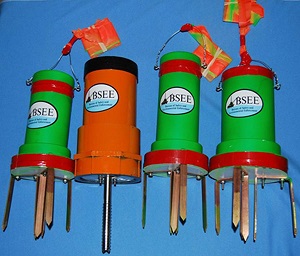Arctic Oil Spill Technology Testing at ICEX
The U.S. Bureau of Safety and Environmental Enforcement (BSEE) is testing Geo-Referencing Identification Satellite (GRIDSAT) tag technology at the U.S. Navy’s Ice Camp Sargo, a temporary station on top of a floating ice sheet in the Arctic as part of Ice Exercise (ICEX) 2016.
The extreme conditions in the Arctic, especially the presence of sea ice, create unique challenges to the identification, tracking and response to an oil spill, should one occur. The GRIDSAT radio/GPS marking device can be left on an ice floe to track the movement of the floe and entrapped oil for a period of up to nine months.
 If an oil spill were to occur in the Arctic, GRIDSAT tag could be used to track oil trapped under or encapsulated in Arctic sea ice.
If an oil spill were to occur in the Arctic, GRIDSAT tag could be used to track oil trapped under or encapsulated in Arctic sea ice.
The bureau is testing the deployment and communication of the system, leaving several marking devices on the ice floe for long-term duration studies. Two methods of deployment are being used, one by a helicopter aerial drop of two GRIDSAT tags with floe spikes and another by manually inserting one GRIDSAT tag using an ice screw technique.
The ICEX 2016 is a five-week exercise designed to assess the operational readiness of the U.S. Navy’s submarine force while also continuing to advance scientific research in the Arctic region. Oil Spill Preparedness Engineers and Specialists from BSEE are part of a diverse and multi-national team with more than 200 participants from more than 35 organizations coming together to support over 25 test objectives at ICEX 2016.
Ice Camp Sargo consists of a series of portable lodging huts, dining and storage facilities, and a command post, and was serviced by two primary frozen runways and two backup runways. The Camp was built on a large floating sheet of ice called an ice floe, nearly 200 miles north of Prudhoe Bay, Alaska.
